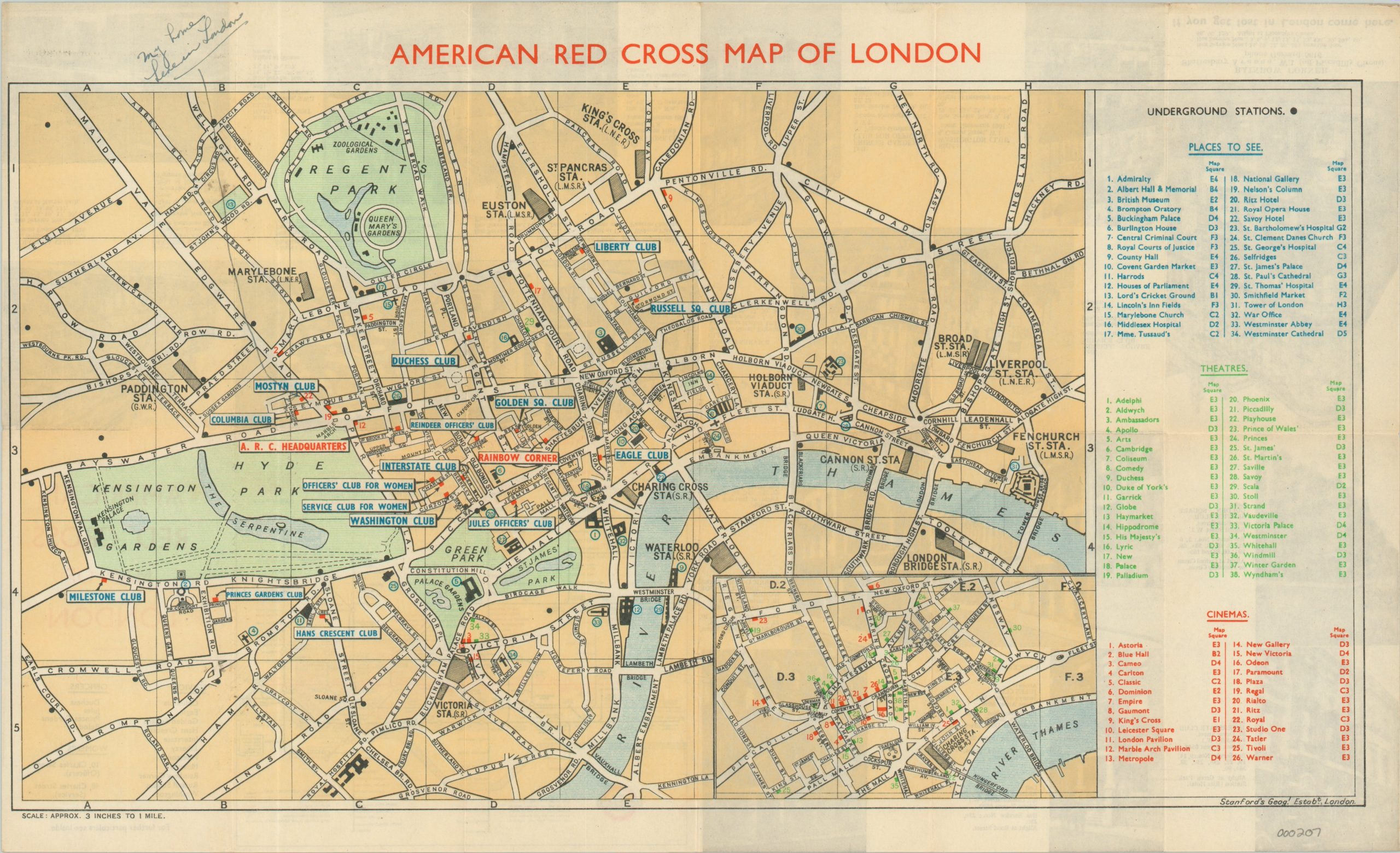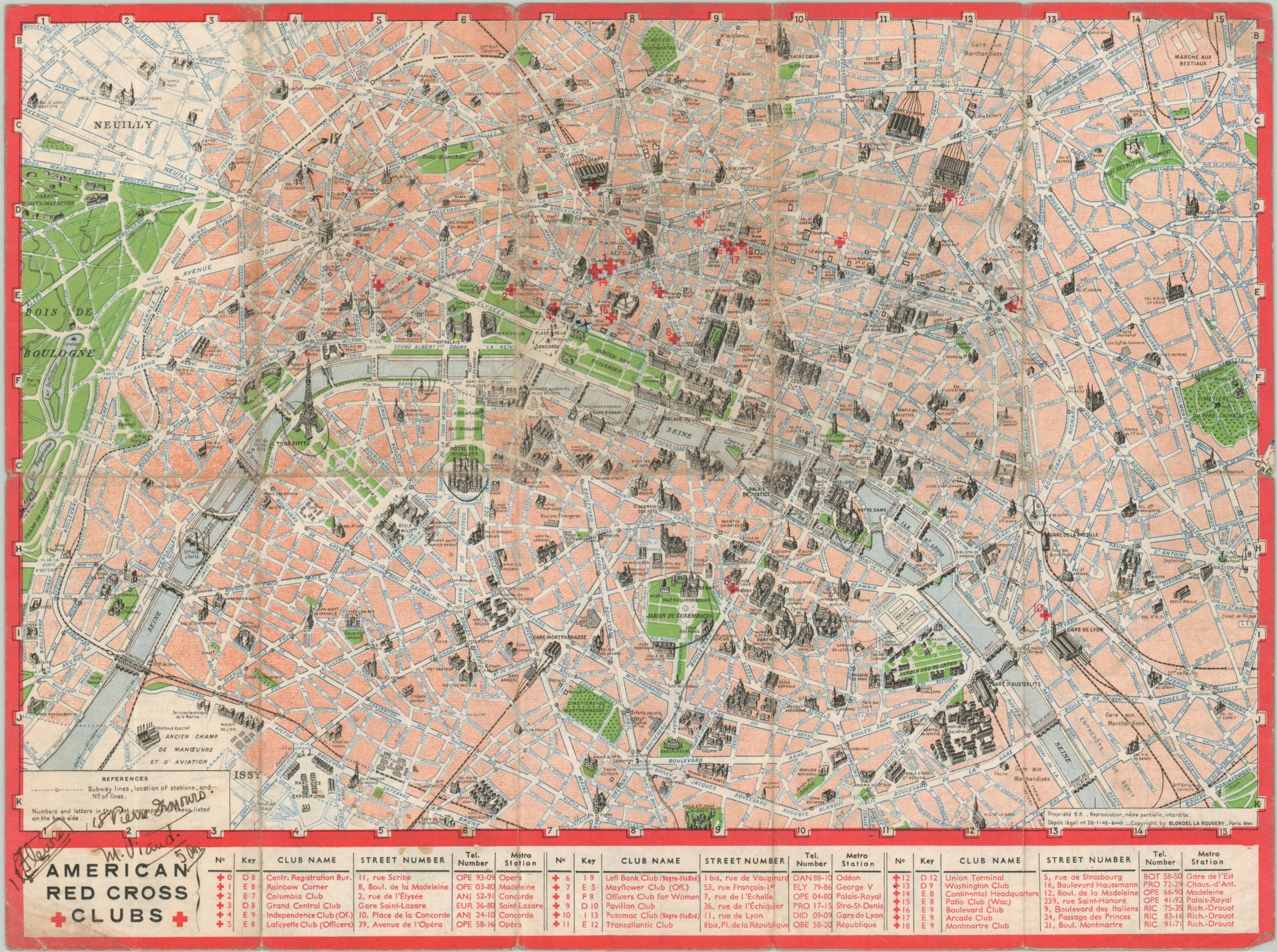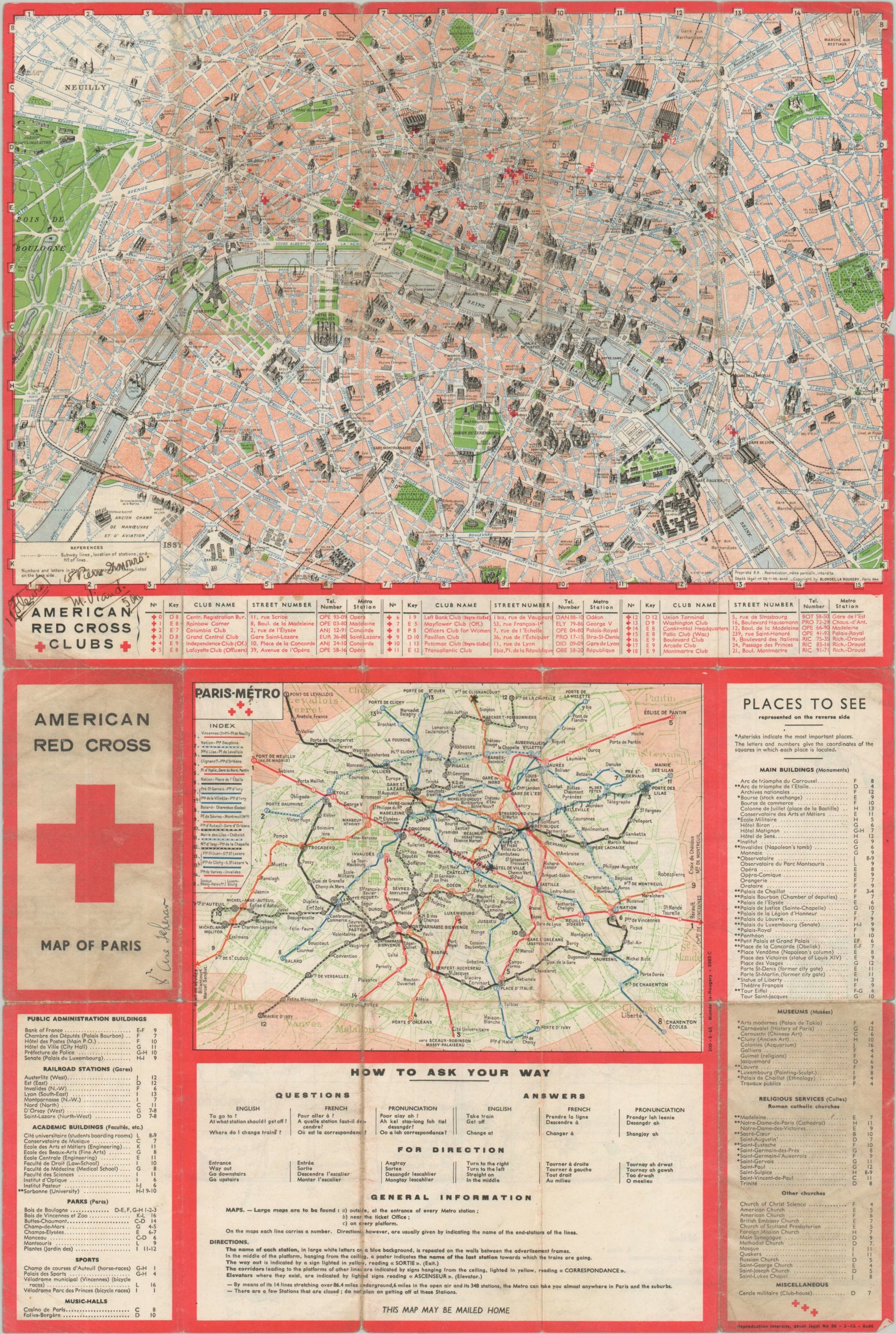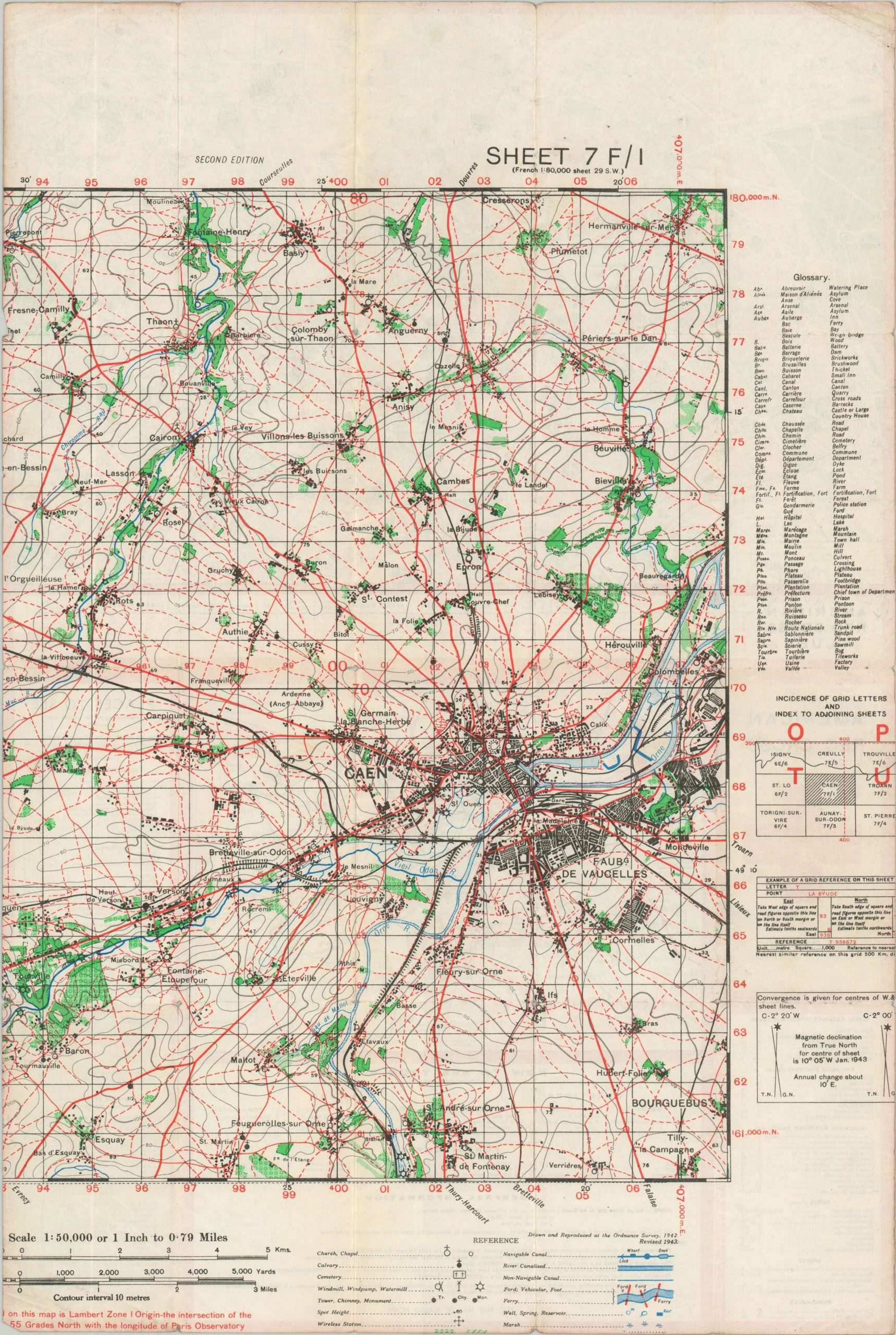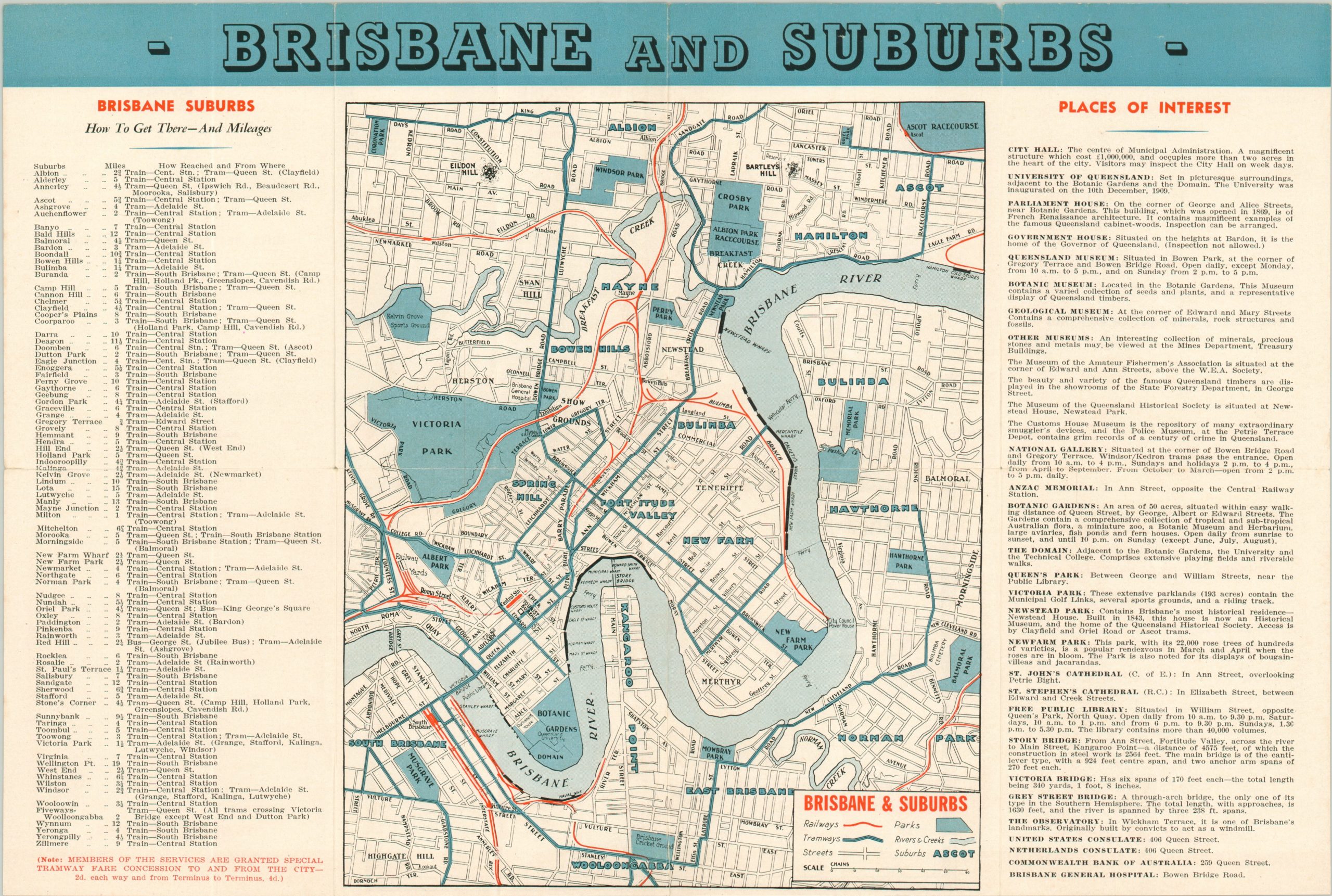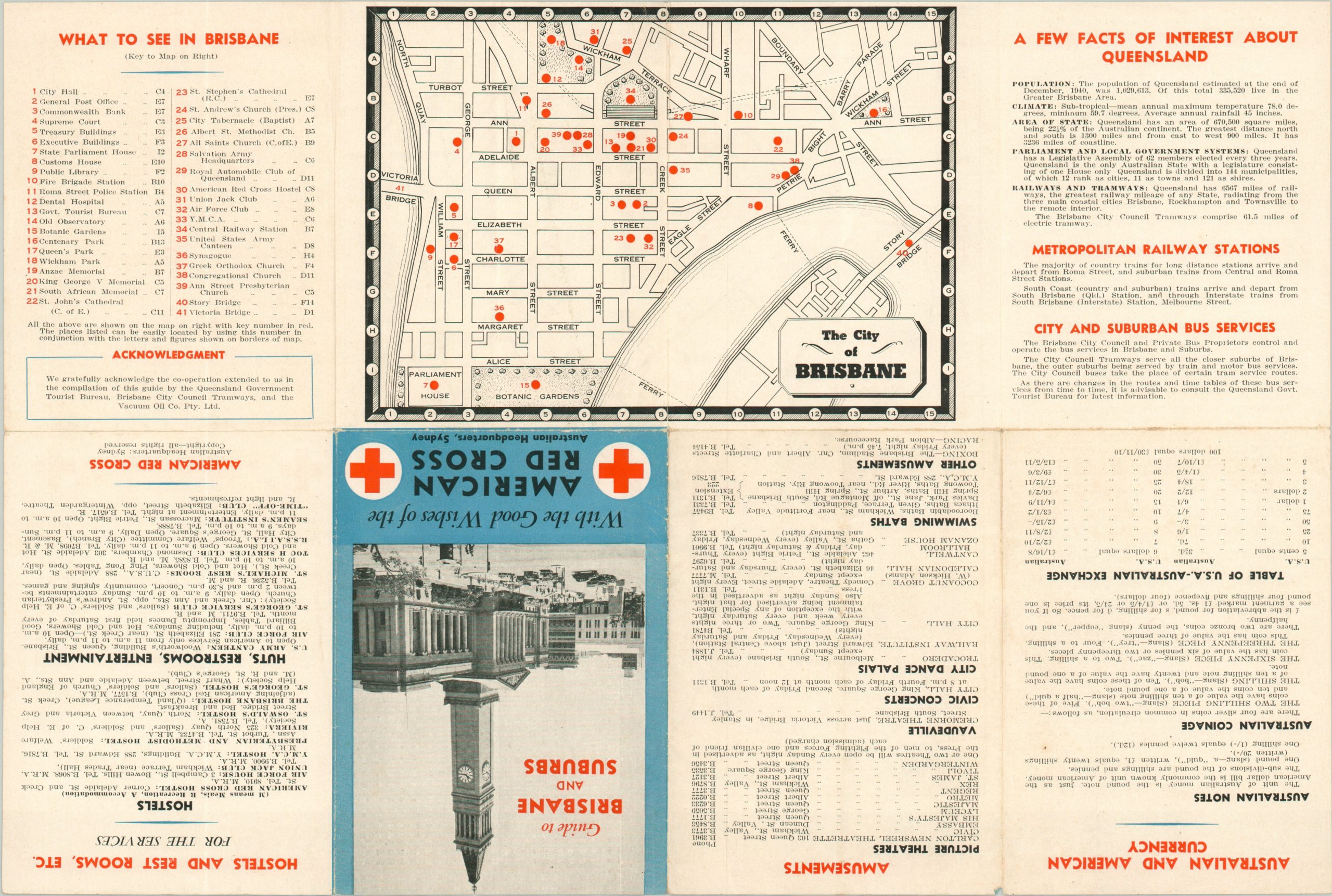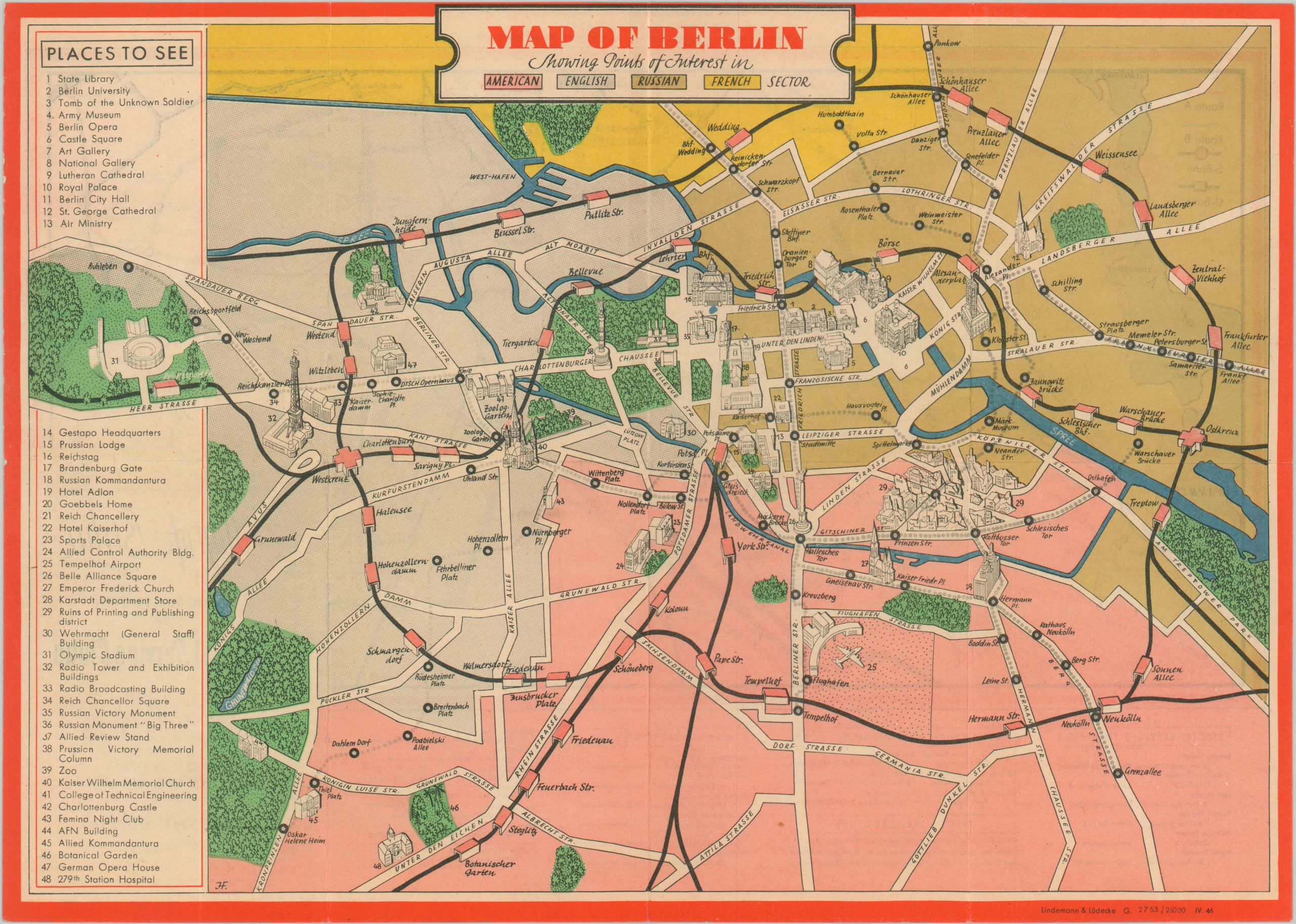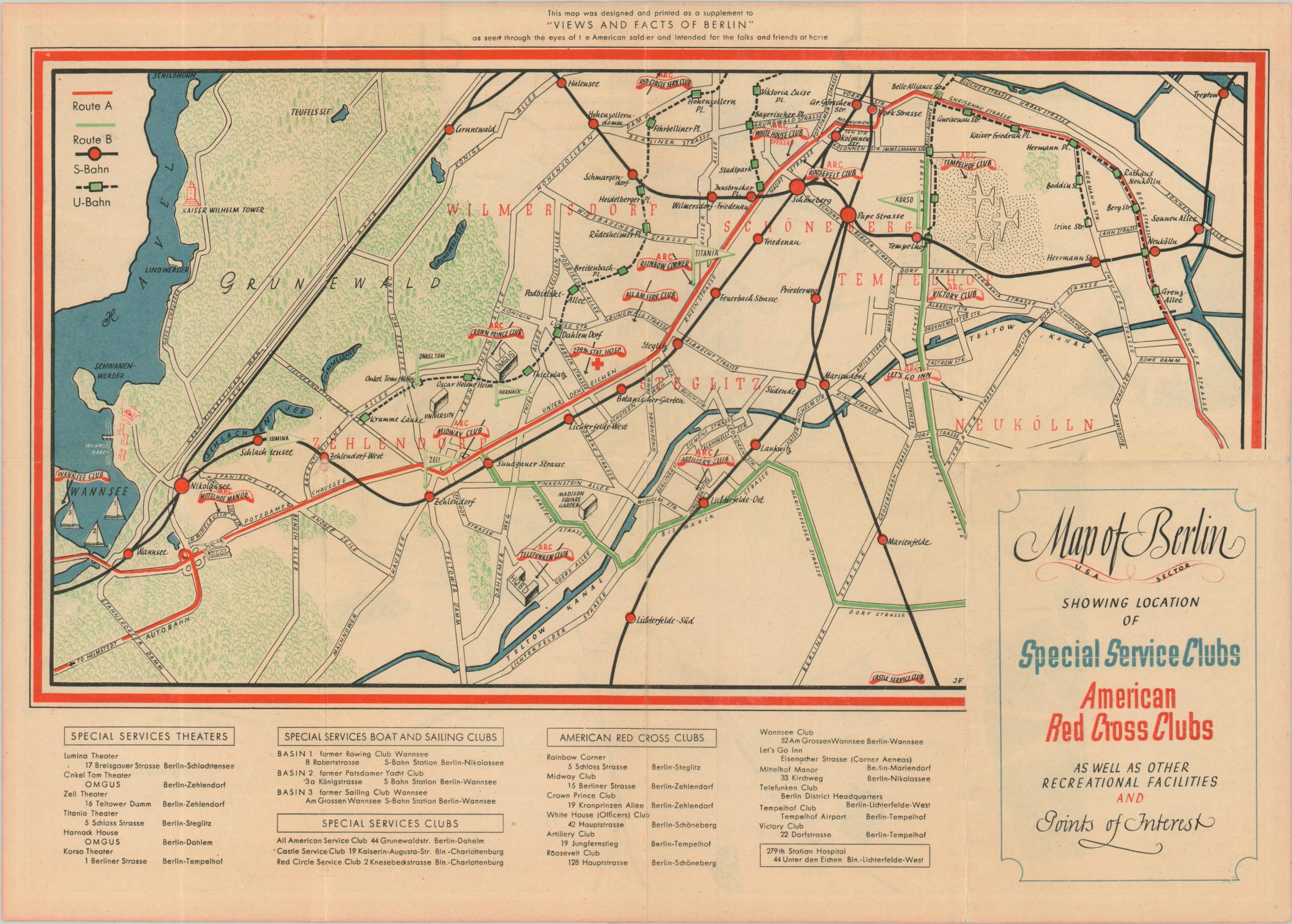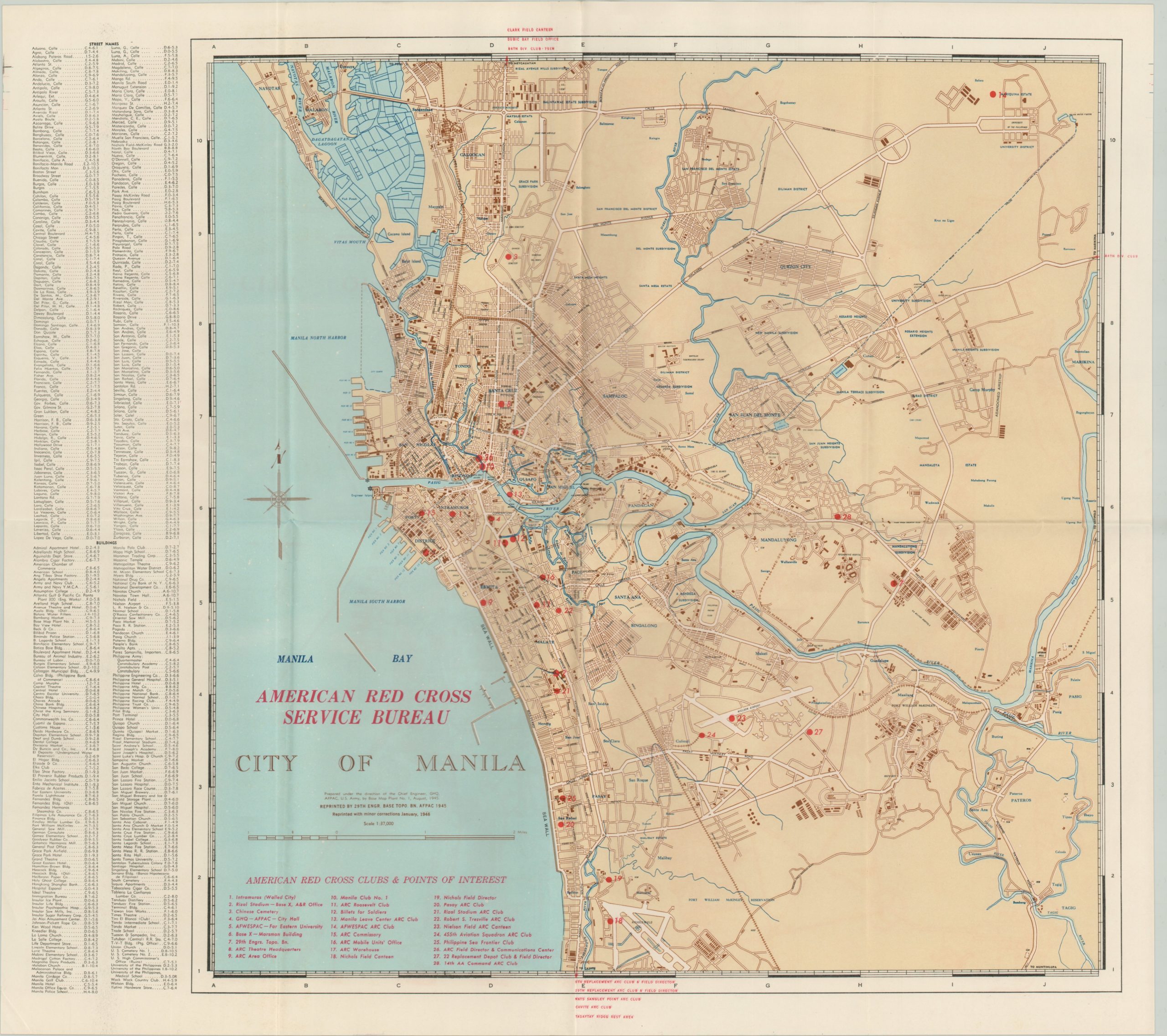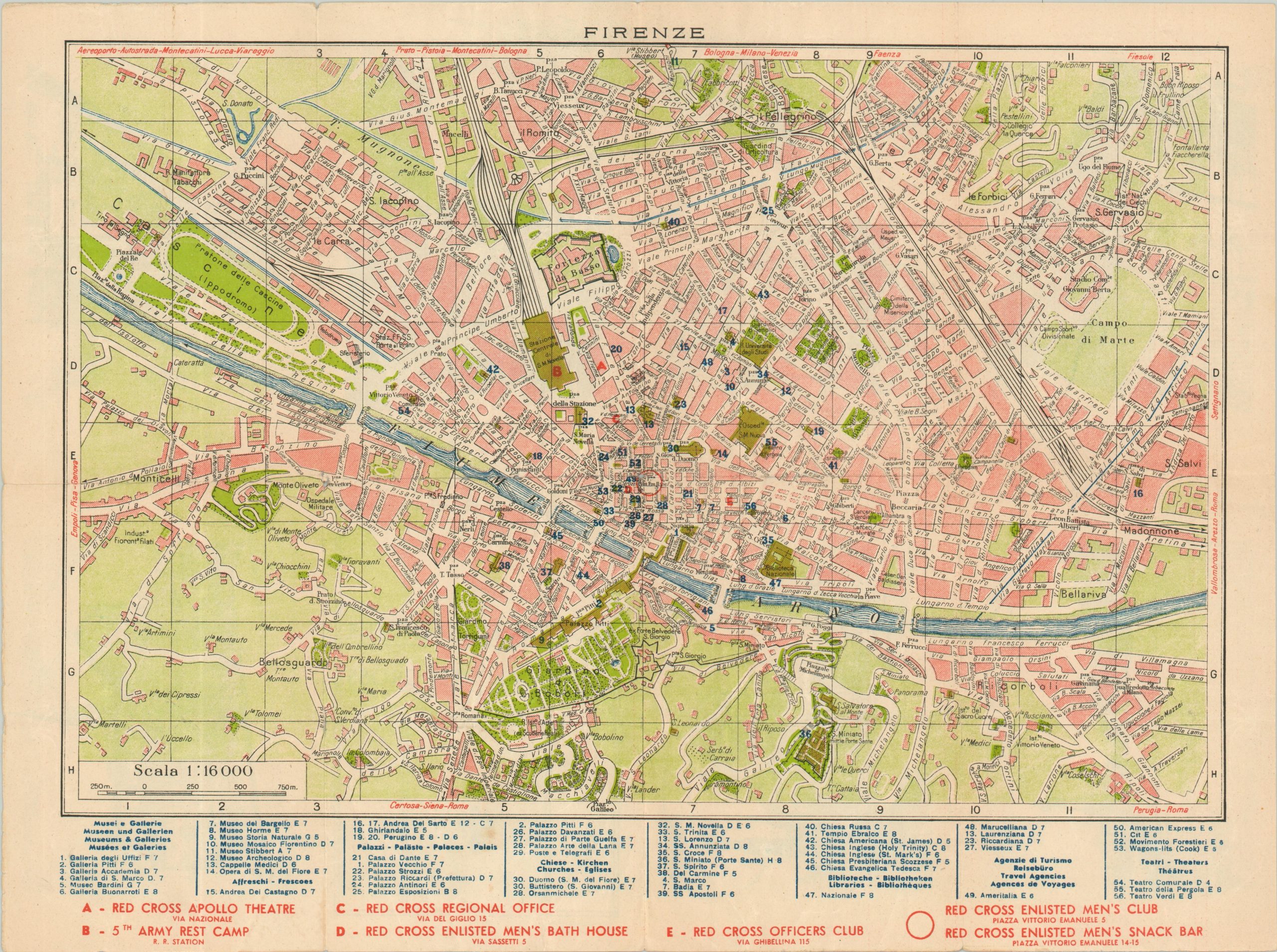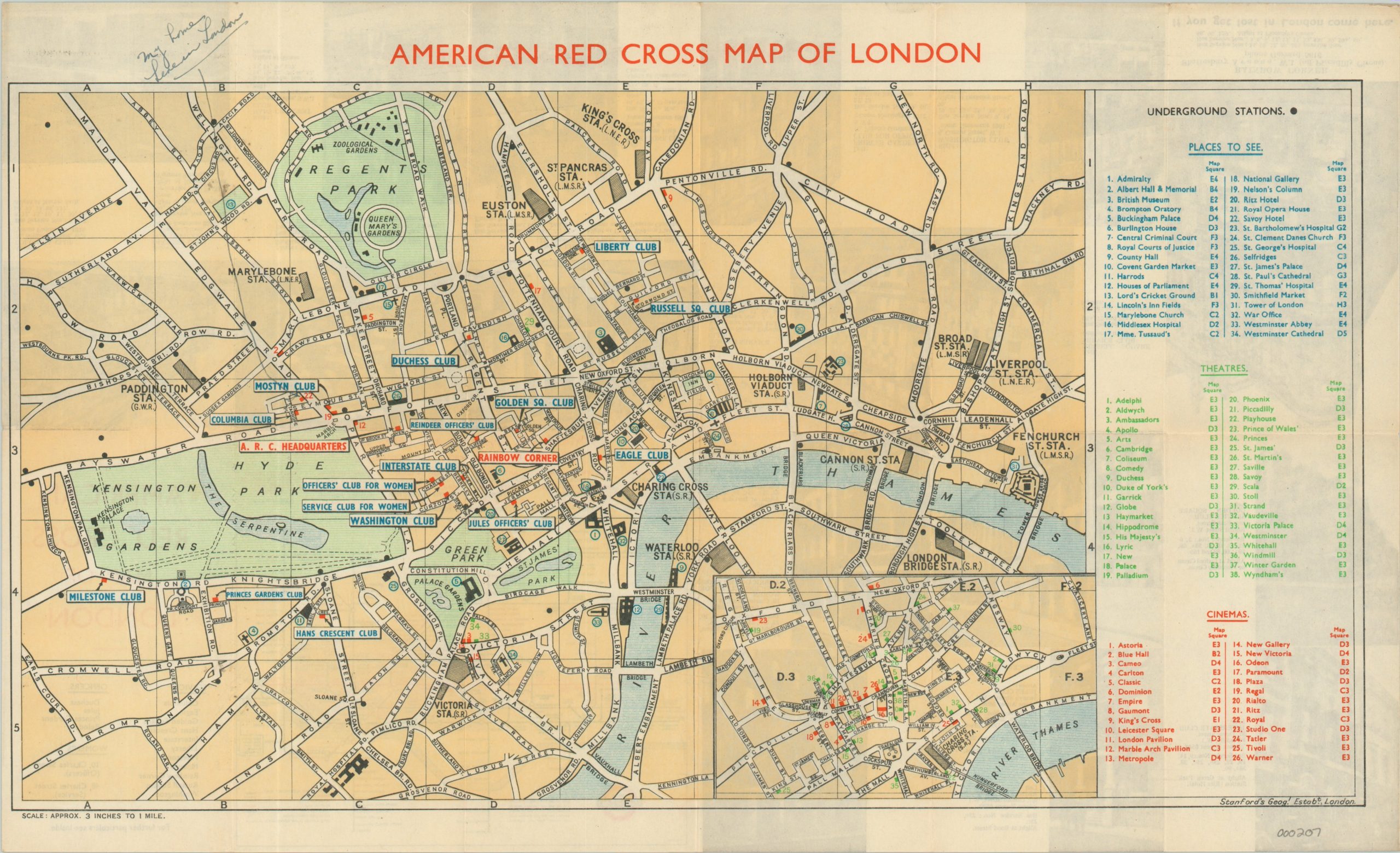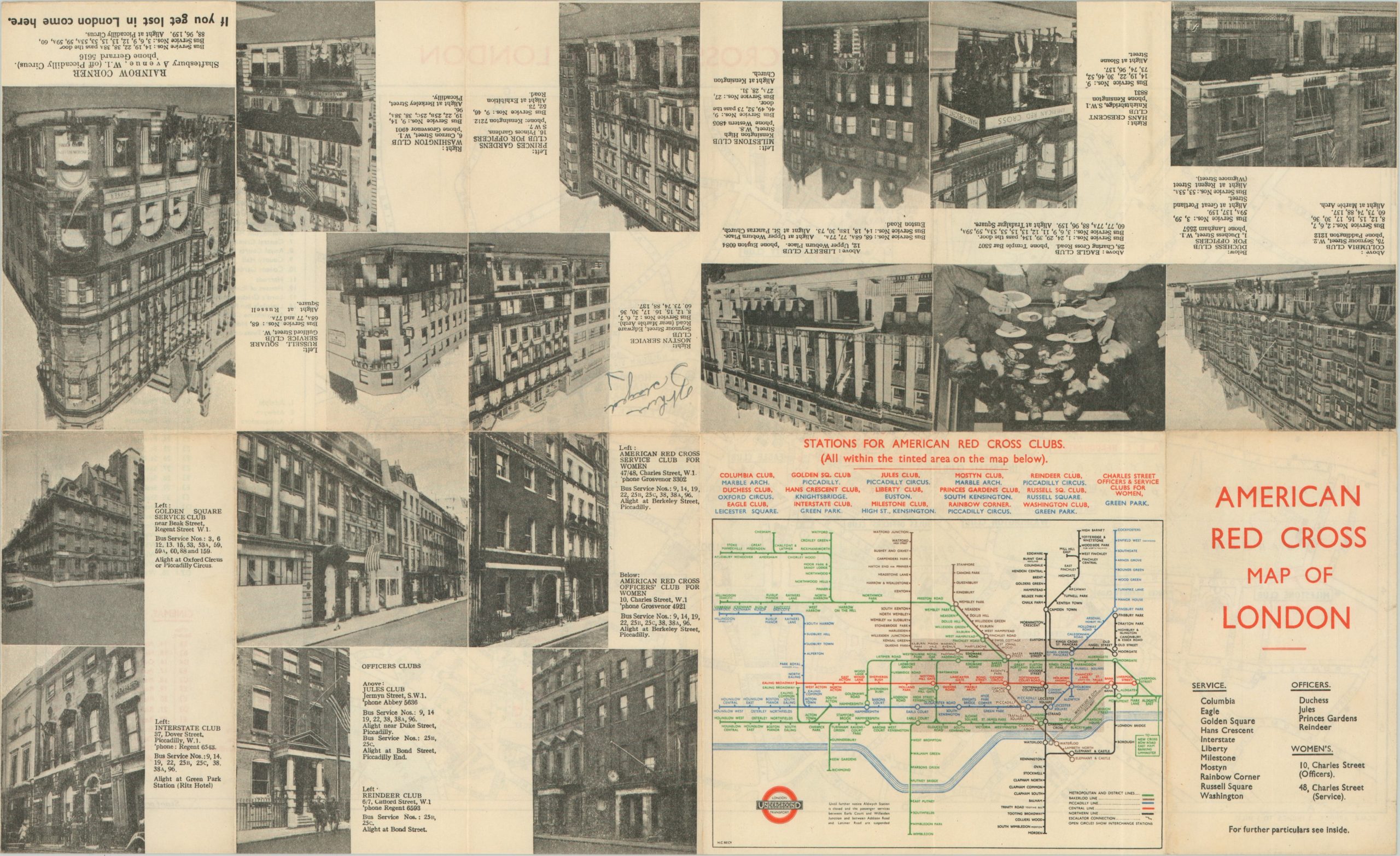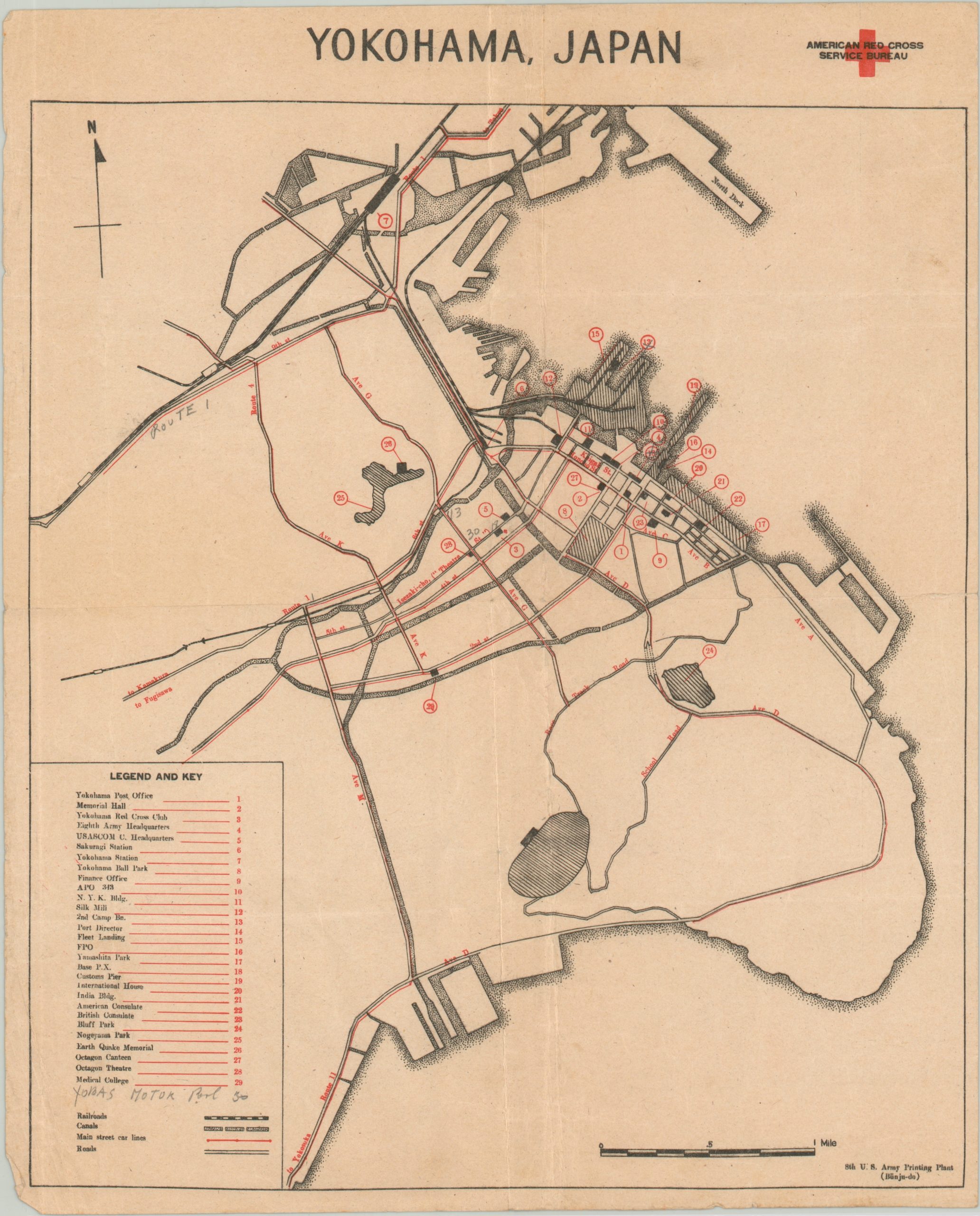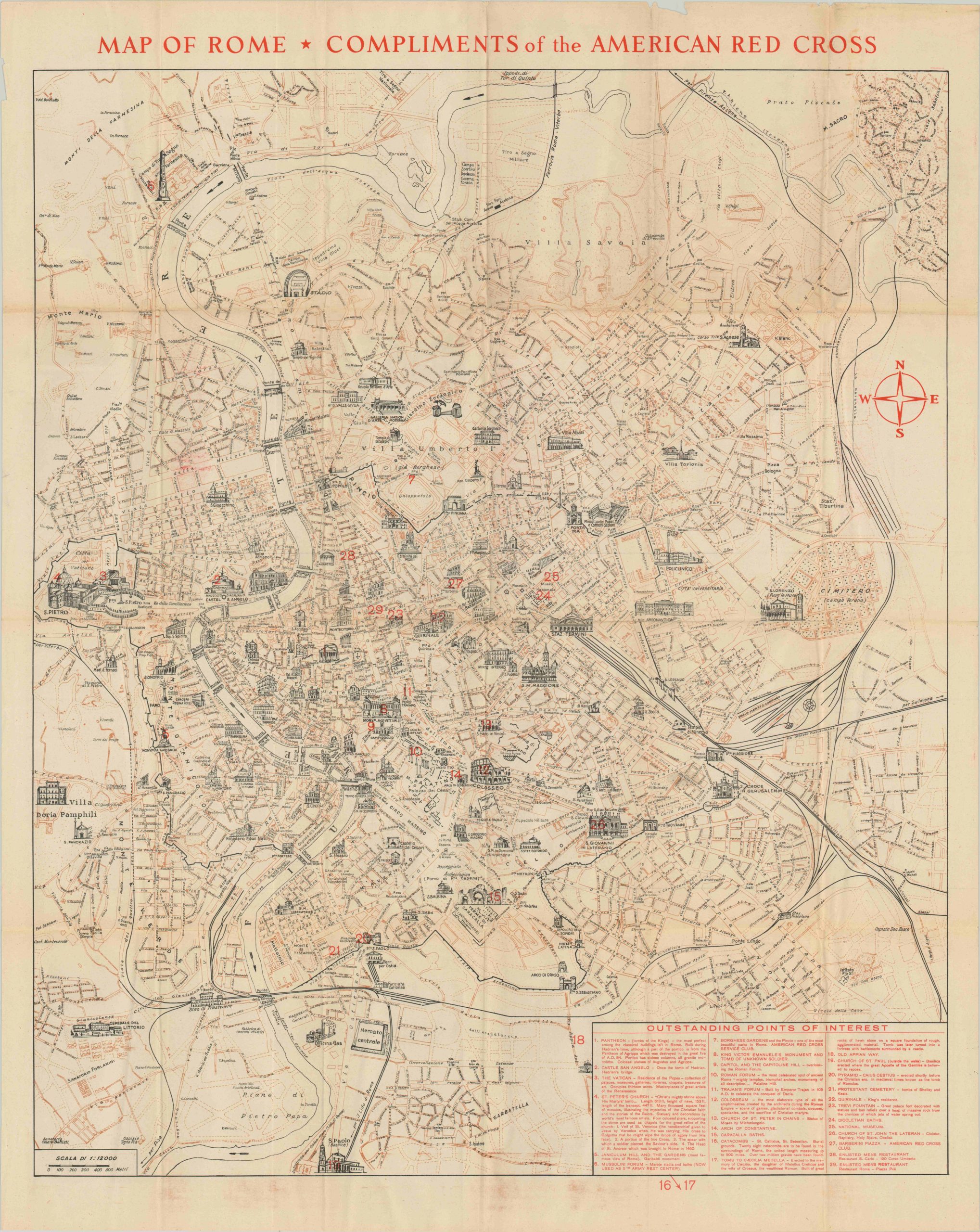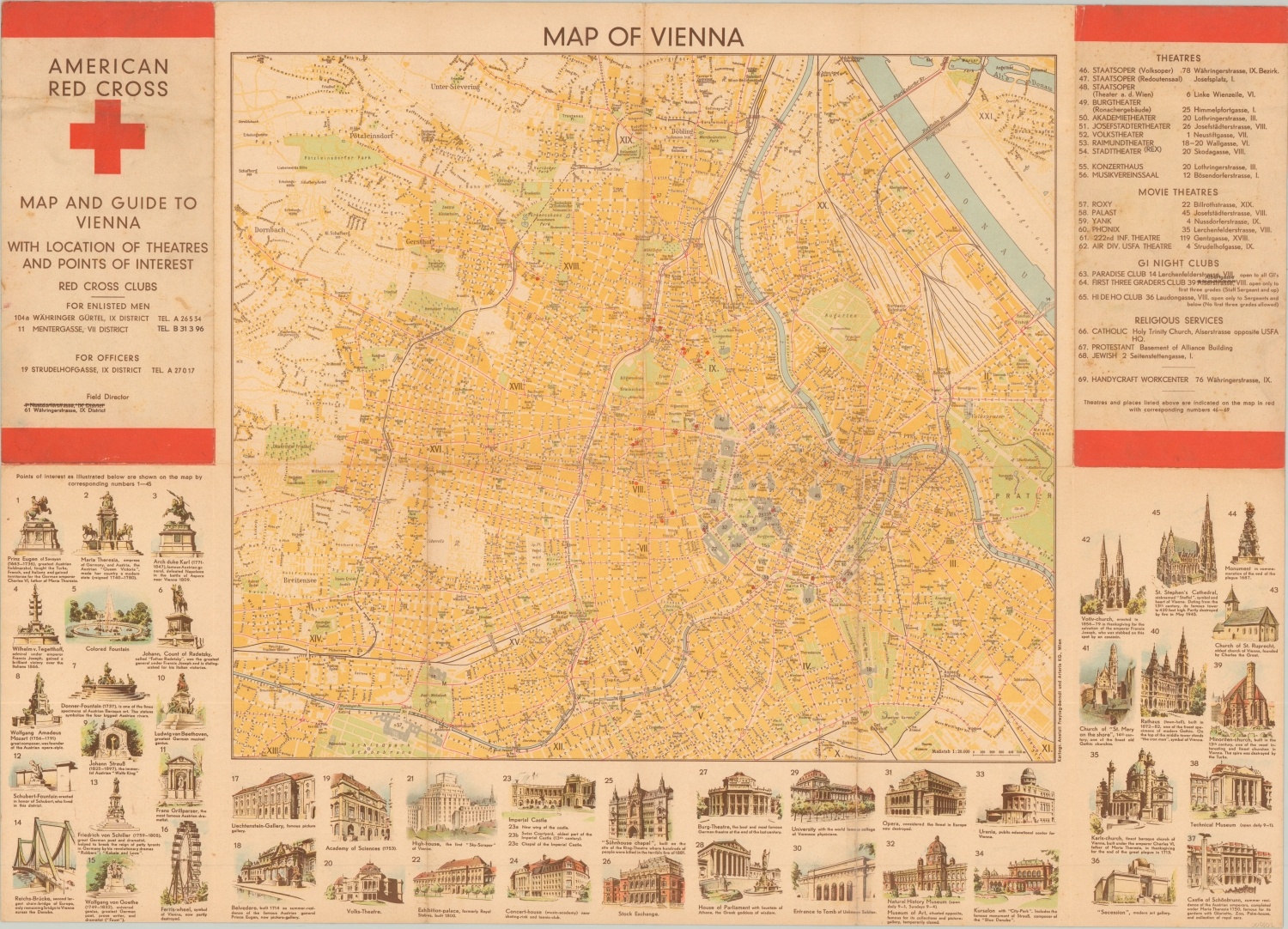[Set of 11 Red Cross city maps]
A diverse collection of eleven maps published to fulfill the wartime purposes of the Red Cross.
Out of stock
Description
The American Red Cross involvement in World War II preceded the entrance of the United States into the conflict. When hostilities began in Europe in 1939, the Red Cross became the chief provider of relief supplies for the civilian victims of conflict distributed by the Geneva-based International Red Cross Committee. In February 1941, the Red Cross responded to a request by the U.S. government to begin a Blood Donor Service to produce lifesaving plasma for the armed forces in anticipation of America’s entry into the war. After the attack on Pearl Harbor on December 7, 1941, the Red Cross quickly mobilized a volunteer and staff force to fulfill the mandates of its 1905 congressional charter requiring that the organization “furnish volunteer aid to the sick and wounded of armies in time of war” and to “act in matters of voluntary relief and in accord with the military and naval authorities as a medium of communication between the people of the United States of America and their Army and Navy.”
[Text taken from World War II and the American Red Cross, available here.]
In addition to providing valuable material, medical support and sanitary services to the armed forces on the front lines, the Red Cross played a hugely important role in the domestic background of the Allied powers during WWII. Club Service was made available at the request of the U.S. government to able-bodied members of the armed forces serving overseas, while recreational services for the military at home remained, as it had been, limited to hospitals. Overseas the Red Cross staffed and supplied permanent service clubs, travelling clubmobiles, and other recreational facilities that stretched literally around the world. At its peak, the Red Cross operated nearly 2,000 recreational service facilities abroad, staffed by 5,000 Red Cross workers and approximately 140,000, mostly local, volunteers.
As part of their congressional mandate, the ARC issued dozens of maps of cities across the European and Pacific theaters of operation. Apart from being useful guides to local transportation, amenities and points of interest, the maps also reflect the organizational presence of the Red Cross within each city. Service clubs provided sources of leisure, warm meals and clean clothes that could help a soldier return to normalcy. Encouraging those on leave from war to stay within a closely monitored system also helped prevent mischief and reduce desertion. The maps were also handy souvenirs for the thousands of volunteers who served at such facilities, as well as their loved ones at home who were desperate to learn more about life overseas.
Paris – 1944. Color map that unfolds to 14.” x 22”. Some wear and discoloration on fold lines. Printed on ration paper. Includes an inset map of the Paris Metro and bird’s eye view of the city center with buildings drawn in profile. Signed and annotated by previous owner.
Brisbane and Suburbs – Late 1942. Color map unfolding to 16.9” x 11.4.” Originally issued fold lines show wear and several separations have been repaired with archival tape. Shows a basic transportation map of the city flanked by a street index and locations of interest. The verso provides a small-scale map of Brisbane’s downtown and supplemental information on amenities and currency. Dated based on the location of only one “official” ARC location. The second would open in early 1943.
Map of Berlin – 1946. Color map unfolding to 15.9” x 11.4.” As it’s a postwar map, areas within the city are colored according to Allied occupying force. 48 locations of interest are noted throughout the city, giving the impression of accessibility and openness. On the verso is a detailed transportation map of the city with various special services and Red Cross locations identified.
City of Manila – 1946. Single sheet unfolding to 22” x 19.8.” 28 ARC locations are overlaid on top of a U.S. Army Corps of Engineering map of the city. Includes index of street names. Manila was the scene of the worst urban fighting in the Pacific Theater, and was key to MacArthur’s promise to return to the Philippines. The map identifies twenty eight separate locations and is updated to January, 1946, just a few months before the United States “granted” Philippine independence.
Firenze (Florence) – late 1944. Color pamphlet unfolding to 16.5” x 12.2.” Only a handful of ARC locations are overlaid in red on this pre-war Italian tourist map of the ancient city. It was occupied for nearly a year by the Germans, who declared it an “open city” before retreating in 1944. Many of the medieval bridges spanning the Arno were destroyed in the process.
American Red Cross Map of London – c. 1943. Color pamphlet unfolding to 18.4” x 11.4.” A previous owner has jotted several notes on this copy, including identifying the Mostyn Club as “my home here in London.” Places to See, Cinemas and Theaters are noted on the main map, while photographs of various ARC clubs and a small map of the Underground are present on the verso. An interesting reflection on a different copy of this map by the Veterans History Project at the Library of Congress can be found here.
Map of Sydney and Suburbs – c. 1942. Color brochure that unfolds to 14.7” x 19.8.” The main map shows the greater Sydney area with emphasis on primary routes of transportation. The verso shows a large-scale inset map of Sydney with 41 locations of interest identified, in addition to extensive information on facts and amenities. Designed by the Sydney cartographer Clive Barrass.
Spend Your Leave in Scotland American Red Cross Service Clubs – c. 1943. Single sheet measuring 8.1” x 12.9.” A small broadsheet advertising for servicemen to “spend your leave in Scotland.” Shows that ARC facilities are available in Edinburgh, Glasgow, Prestwick and Gourock. Identifies chief roads and railroads that serve the region and pictorially depicts features throughout Scotland. Blank on verso.
Yokohama, Japan – late 1945. 11″ x 13.4″ Single sheet city plan of Yokohama made very shortly after Japan’s surrender, before the occupational headquarters moved to Tokyo. Printed by the U.S. 8th Army Printing Plant and lists 30 separate numbered locations, the last of which (the Yobas Motor Pool) was added in pencil by a previous owner. Very good condition, with wear along fold lines and light crinkling in the upper and lower right corners.
Map of Rome – Compliments of the American Red Cross – late 1944/early 1945. 27″ x 34″ Scarce, large folding map of Rome created shortly after occupation of the city by the American Fifth Army. The underlying map, which shows prominent buildings and attractions in profile, is in Italian, while the red overlaid text is in English. Twenty-nine “outstanding points of interest” are identified. Faint smudging, small chip in the upper edge, and small holes at fold intersections, but very good overall.
Bird’s Eye View of Vienna – 1946. 27” x 19.5” Excellent double-sided map of Vienna published during the Allied occupation of Austria. One side shows a lovely bird’s eye view of the city with prominent buildings illustrated in profile. An inset map shows the divisions of districts within Vienna according to Allied occupational force. The verso features a detailed city plan (in German), with thirty seven points of interested numbered, described and illustrated.
Price is for the set. Please reach out if you are interested in purchasing a map individually.
Map Details
Publication Date: 1942 - 1946
Author: Various - See Description
Sheet Width (in): See Description
Sheet Height (in): See Description
Condition: B
Condition Description: The set is generally in very good condition overall. Some pieces may exhibit minor wear, faint soiling, small edge tears, etc. A number of examples have annotations, either in pencil or pen, from previous owners. Any significant issues are noted in the individual descriptions.
Out of stock

